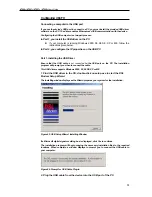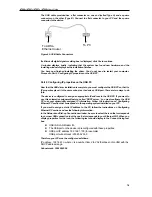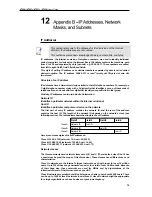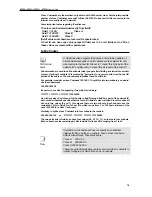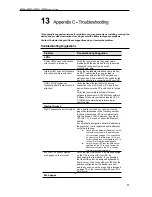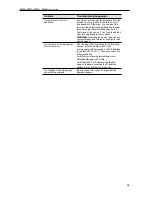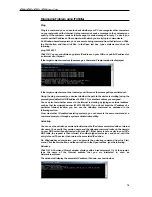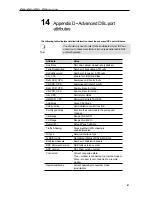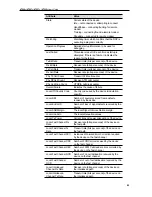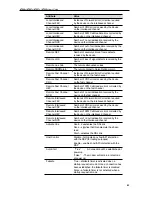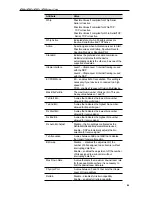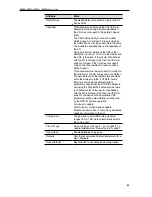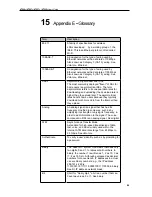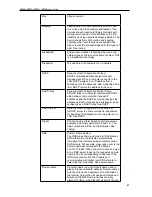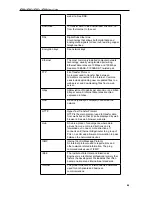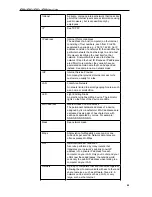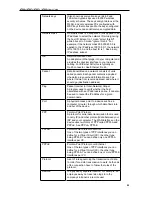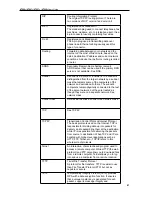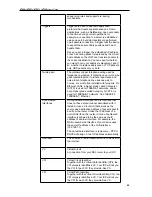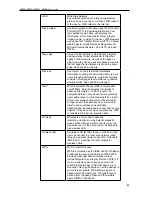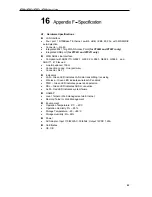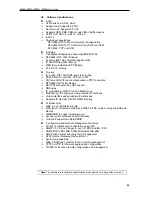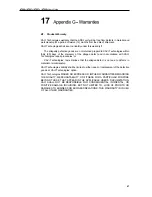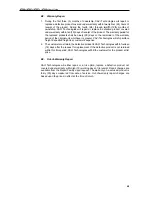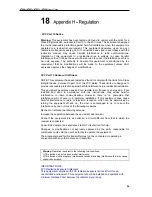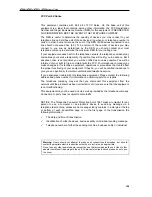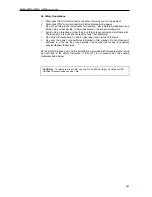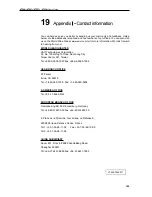
X7968r / X7967r / X7927r / X7922r
User
’
s Guide
87
Bps
bits per second
Bridging
Passing data from your network to your ISP and
vice versa using the hardware addresses of the
devices at each location. Bridging contrasts with
routing which can add more intelligence to data
transfers by using network addresses instead. The
device can perform both routing and bridging.
Typically, when both functions are enabled, the
device routes IP data and bridges all other types of
data. See routing.
Broadband
A telecommunications technology that can send
different types of data over the same medium. DSL
is a broadband technology.
Broadcast
To send data to all computers on a network.
DHCP
Dynamic Host Configuration Protocol
DHCP automates address assignment and
management. When a computer connects to the
LAN, DHCP assigns it an IP address from a
shared pool of IP addresses; after a specified time
limit, DHCP returns the address to the pool.
DHCP relay
Dynamic Host Configuration Protocol relay
A DHCP relay is a computer that forwards DHCP
data between computers that request IP
addresses and the DHCP server that assigns the
addresses. Each of the device's interfaces can be
configured as a DHCP relay. See DHCP.
DHCP server
Dynamic Host Configuration Protocol server
A DHCP server is a computer that is responsible
for assigning IP addresses to the computers on a
LAN. See DHCP.
Digital
Of data, having a form based on discrete values
expressed as binary numbers (0's and 1's). The
data component in DSL is a digital signal. See
analog.
DNS
Domain Name System
The DNS maps domain names into IP addresses.
DNS information is distributed hierarchically
throughout the Internet among computers called
DNS servers. For example, www.yahoo.com is the
domain name associated with IP address
216.115.108.243. When you start to access a web
site, a DNS server looks up the requested domain
name to find its corresponding IP address. If the
DNS server cannot find the IP address, it
communicates with higher-level DNS servers to
determine the IP address. See domain name.
Domain name
A domain name is a user-friendly name used in
place of its associated IP address. Domain names
must be unique; their assignment is controlled by
the Internet Corporation for Assigned Names and
Numbers (ICANN). Domain names are a key
element of URLs, which identify a specific file at a

